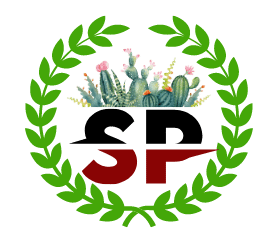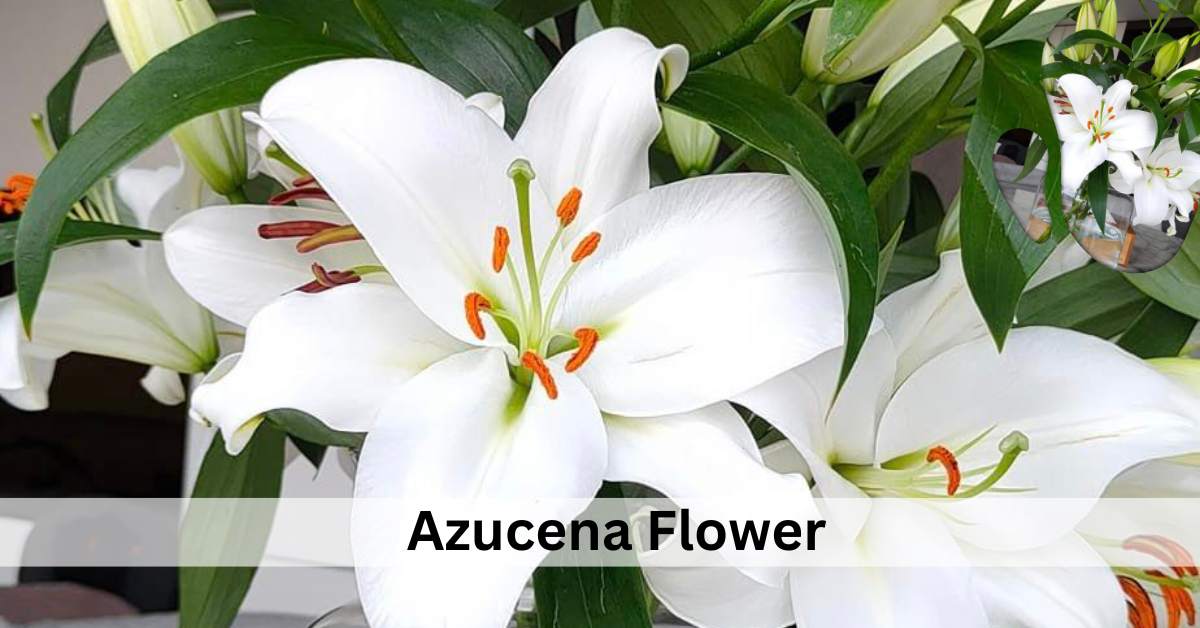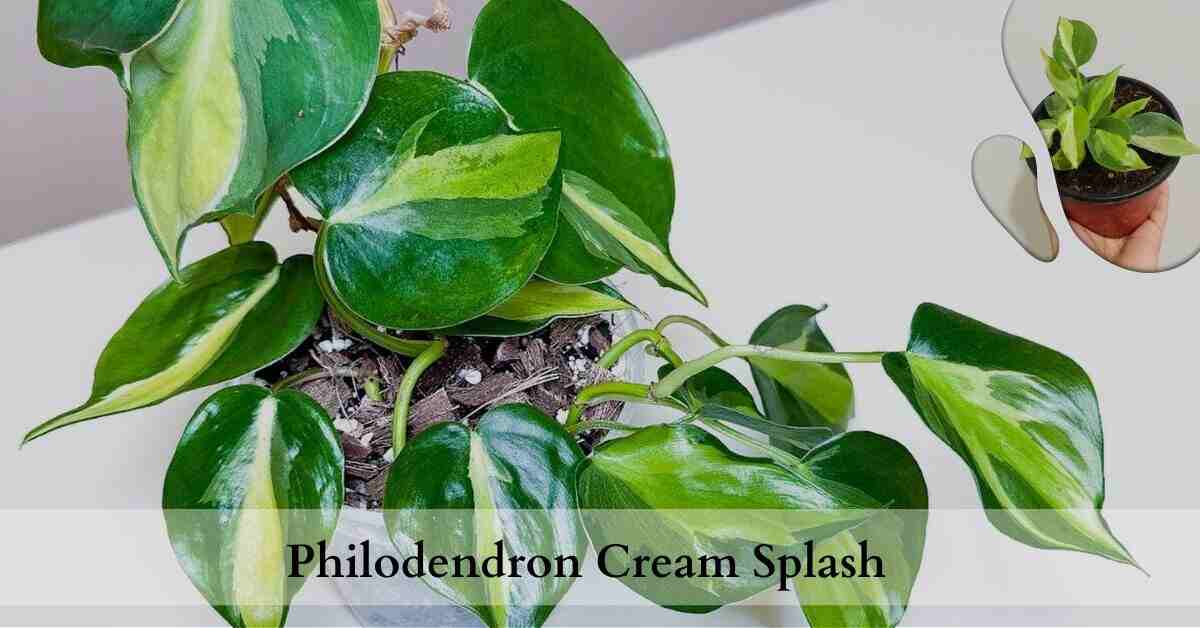Alocasia Sinuata
Dear flower lovers, gardeners did you ever heard about Alocasia sinuata. Let’s know briefly about it. Alocasia sinuata, commonly called quilted dreams or Bullata or Jewel Alocasia is a small tropical perennial foliage plant commonly used in indoor gardening for its stunning lustrous and glossy leaves. Alocasia sinuata was named sinuate owing to their wavy leaf edges.
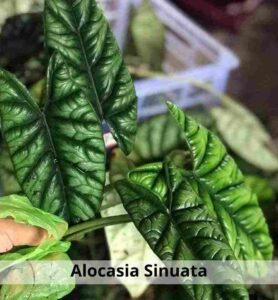
Alocasia sinuata is a rare Philippine native originating from the limestone forests of Palawan, Samar, Leyte and some parts of Mindanao. It is also called Elephant ears, its genus being Alocasia and Mirror face due to its shiny metallic appearance.
The plants start green and go towards darker green having metallic grey patina and dark sunken veins on maturity. Their arrowhead or heart shaped broad leaves sit on the top of the petiole. Their leaves can grow up to 10 inches( 27 cm).They have glabrous round stems whose length ranges from 12 to 14 inches ( 30-35 cm) on maturity.
They are toxic to plants and animals due to the presence of Calcium Oxalate crystals which causes skin irritation on touching and leads to nausea, vomiting, diarrhoea if chewed. However, they can be cooked or roasted for a prolonged period to get rid of toxicity. The plant thrives pretty well in USDA Hardiness Zones 10 to 12 with warm weather throughout the seasons.
Some of the varieties of Alocasia sinuata are listed below:
Alocasia sinuata silver
Alocasia sinuata green
Alocasia sinuata Variegated
Alocasia sinuata Quilted dreams
Alocasia sinuata Mirror face
Alocasia Sinuata Variegated
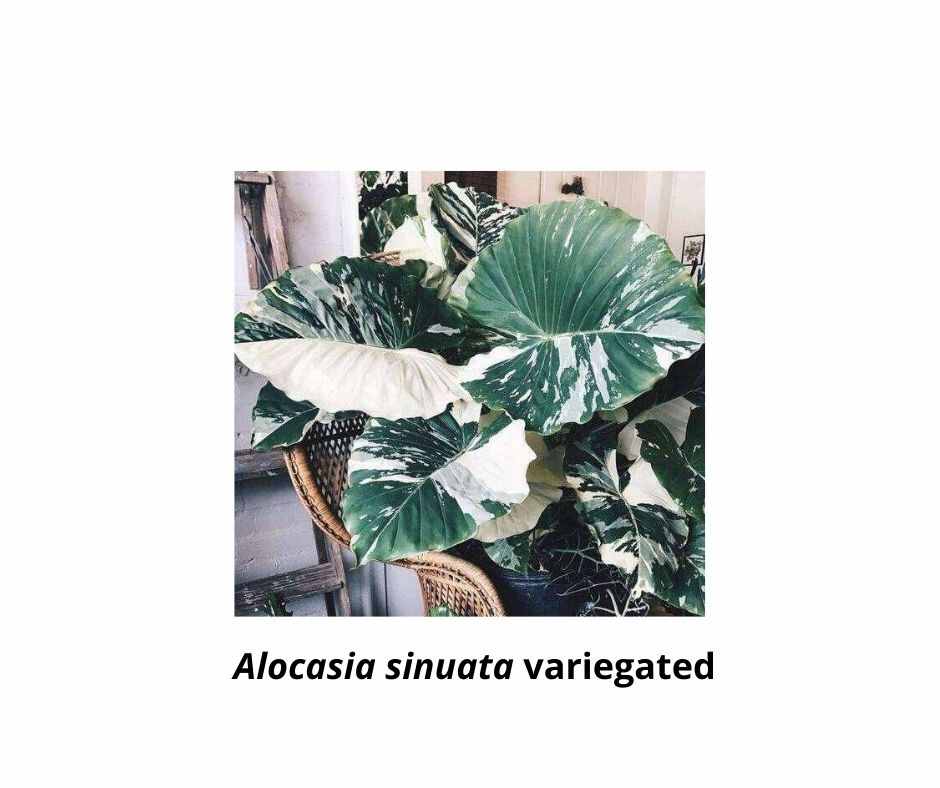
Macrorrhiza Variegata is a rare variegated standing Alocasia species. Variegated alocasia sinuata leaves are mottled with the tones of light green and white blotches. They prefer moist, tropical environment. They need more feeding as the white blotches of leaves can’t take part in photosynthesis. A large space is captured to let them spread vertically as well as horizontally. Their huge leaves on widely spreading stalks makes them really unique and interesting.
The species of Alocasia varies among each other by tiny variances in color, texture and their foliage formation.
Also Read:- Monkey Tail Cactus: Care and Propagation
Alocasia Sinuata Vs Dragon scale
A. sinuata are Philippine native while A. baginda aka Dragon scales are native to the tropical rainforests of Borneo, Indonesia.
The sinus of A. sinuata is usually closed while that of A. baginda is more open and sometimes fully open.
The leaves of A. sinuata are comparatively shiny and much more bullate in appearance.
Alocasia sinuata vs Green Shield
Green Shield have thicker and broader leaves than A. sinuata which facilitate them to tolerate heavy rains.
Since Green shields need larger space to grow they are considered ideal for large garden space outdoors while the A. sinuata smaller in size is popular indoors.
However, Green shields are planted indoors in temperate zones while they are kept inside shady gardens in tropical zones.
Is Alocasia sinuata an endangered?
Alocasia sinuata is a rare species classified as critically endangered by the International Union for Conservation of Nature (IUCN). So, efforts must be made for their conservation and diversification.
Botanical Classification of Alocasia sinuata
Kingdom: Plantae
Clade: Tracheophyte
Clade: Angiosperms
Clade: Monocots
Order: Alismatales
Family: Araceae
Genus: Alocasia
Species: sinuata
Alocasia sinuata care
Alocasia can definitely brighten up the indoor environment when cared for properly. Since they are one of the endangered species, proper care and monitoring must be done to protect them.
Soil
The soil needed for Alocasia sinuata be permeable, well aerated, properly drained and moist at the same time. Dry, rocky, sandy and wet soils should be strictly avoided. It should be allowed to dry in between watering intervals.
The main intention of keeping the soil aerated and drained is to ensure easy access of oxygen to the root tissues. When water lodging occurs, the water molecules pushes out the air tissues and halt respiration leading to suffocation and death of plant roots.
Generally, Alocasia sinuata takes intense dryness to cause any big harm but the plants are highly susceptible to wetness. So, it’s better to let soil dry than wet.
Light
Alocasia sinuata needs bright and indirect light as they are naturally inhabitant beneath the tree canopy on the floor of Forest. They love bright shades. The morning sun is good for them.
Prolonged exposure of this plant under the direct sunlight may cause leaf burn, sun scorching and color fade due to dehydration. So, Alocasia sinuata should be kept in the area where plants can get easy access to sufficient indirect sun rays.
Curled leaves and burned edges are seen on overexposure and symptoms like leaf droop, guttation and tilting towards the sunlight are observed on underexposure to sunlight.
Water
Distilled water is preferred for its proper growth. Tap water may contain chlorine, salt and other minerals which may react with the leaves causing unnecessary spots on the leaf surface. They are kept damp but not wet or saturated.
The 2 inches of soil is left to dry before watering. Watering should be done if no soil particles got stuck on the finger till 2 inches. The soil should neither be dry nor wet.
Overwatering is the major cause of stem, root rots, bacterial and fungal infections, to prevent which appropriate watering schedule should be formulated and implemented properly. Overwatering causes yellow leaves while underwatering leads to brown leaves.
Temperature
Warm temperature is considered ideal for this plant since this plant originated from the Philippines which lies near the equator and has warm to hot temperature throughout the year.
This plant thrives between 60 to 80 degree Fahrenheit (16 to 27 degree celsius) temperatures. Being a tropical plant, there are no cold months and they are not cold hardy. They have temperature tolerance to 55 degrees Fahrenheit only, however they can withstand hotter temperatures than their normal range.
Yellowing of leaves, leaf drop and slow growth problems arise on temperatures below this threshold.
Humidity
Humidity is the most significant factor in determining the growth pattern of this plant. They love a solid humid climate.
Humidity of 60% or more is needed for its optimal growth. At its least, about 50% humidity must be ensured.
The dry air due to low humidity can turn the leaf edges and tips permanently brown and cause their leaves to droop. In such cases, misting the plant regularly can help increase the humidity level.
Fertilizers
Alocasia sinuata falls under the category of small Alocasia species. Thus, they don’t require as many nutrients as other species. However, they do need some nutrients for its optimum growth and polishing their foliage beauty.
All-purpose liquid fertilizer can be fed to the plant once a month only during their active growing phase mainly in summer and spring season. The feeding is stopped once fall arrives and restarted again next spring.
The use of slow-release fertilizer which are mostly available in pellet, granular form can save the plant from the risk of overdose.
The fertilizer with high nitrogen is selected for their heavy growth. Diluting the fertilizer before spreading prevents accumulation of unwanted mineral salts. Drooping of leaves and stem indicate malnourished condition. On the other hand, burnt tips are resulted when Overfed.
Potting And Repotting
They are potted in small pots due to their natural compact habitat. Using large pots causes unhealthy root growth, thus slowing down plant growth. The potting mixture should be crumbly, well-drained and aerated. Clay pot is highly recommended as potting material which can prevent root rot by stopping water retention.
Repotting is recommended once every year when the plant grows to twice its size. The plants are then shifted to a new potting mix since all the nutrients in the previous mix are almost consumed by the plant during their growth.
Alocasia Sinuata Propagation
Alocasia sinuata can be easily propagated at home through seeds, plant division offsets and corms.
Seeds
Seasonal changes and close monitoring is required to propagate this plant through seeds.
First, the isolated seeds are soaked in distilled water overnight in order to remove any chemicals or enzymes that can interfere with germination. Wet seeds are sown half an inch into the pot maintaining all the optimal conditions. The warmth and humidity favours germination.
Division
The soil on the tubers is brushed off gently and tubers are divided carefully. Each tuber can grow into a new plant on its own after potting them on a new pot.

Since the cuts are infected quickly, repotting should be done immediately after cutting. The extra roots are cut before repotting.
1. Offsets: We can see many sprouts beside the mother plant. The baby sprouts are removed gently and repotted when they become at least 3 inch tall.
2. Corms: When plants are repotted, you can see many corms beneath the roots which are used for propagation. They are potted in a well drained organic potting mix and then covered with an inch and half compost mix. Little amount of water is spread over the surface and covered with plastic to provide good moisture until they sprout. We don’t need to water them for 1 or 2 months. They should be protected from sneaky snails and hoppers.
Pests
Alocasia sinuata are highly prone to pests and infections. Pests like Mealybugs, Aphids, spider mites and scales are major threats.
- Mealybugs can suck the sap and encourage fungal growth in plants.
- Aphids are difficult to detect and are called plant lice which infect the plant with viral infections.
- Scales are another pest with a hard exterior difficult to remove using spray.
The simplest way to prevent plants from such pest attacks is cleaning or dusting the leaves timely on both sides. Solutions like soapy water, Neem oil are proven efficient to treat and remove pest infestation. The infected plant should be first isolated from the health plants before treatment.
Price
The price range of this rare plant ranges from 25 US $ to 65 US $.
Pros Of Alocasia Sinuata
- The foliage beauty of this plant brings positive vibes to your indoor space.
- The small size of this plant is perfect and the conditions required for it totally favors indoor gardening.
- It doesn’t require excess fertilizers or resources.
- Its beautiful view is a great treat if we can take proper care of it.
Cons Of Alocasia Sinuata
- It is toxic to humans as well as animals. Touching stem and leaves may lead to skin irritations, rashes and allergy.
- Oxalate crystals present on them lead to mouth pain, nausea, vomiting, and diarrhoea if chewed accidentally.
- It is difficult to maintain a proper humidity level.
- A little spot on a leaf and the whole leaf become meaningless.
Conclusion
There’s no doubt the shiny metallic and lustrous Alocasia sinuata can brighten your indoor space and create a fascinating sight to behold. The texture and ridges of the leaves make it look exceptionally stuning. It is a sensitive plant which requires proper care and monitoring. One must promise themselves to manage quality time to monitor the plant before purchasing it. So, little effort must be made for a beautiful reward and all those efforts are totally worth the satisfaction we get from this plant. However, it is not recommended for a beginner since the risk of failure is high.
